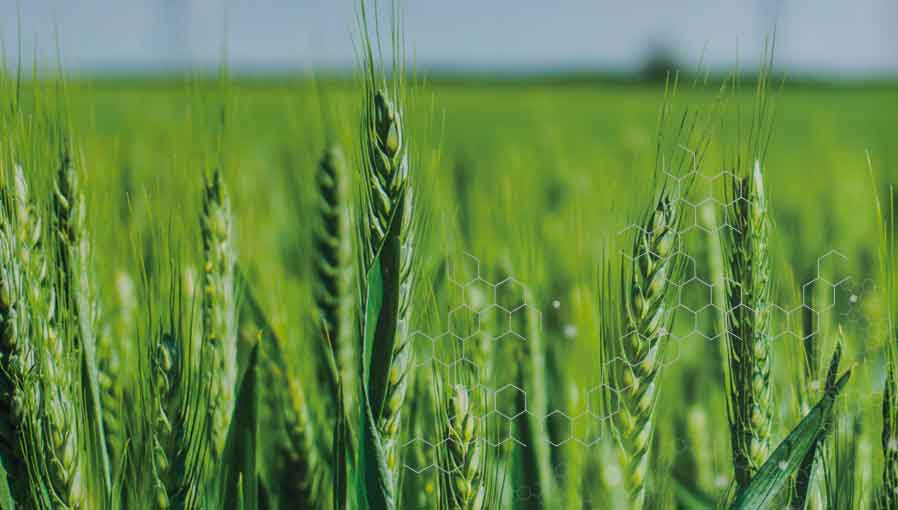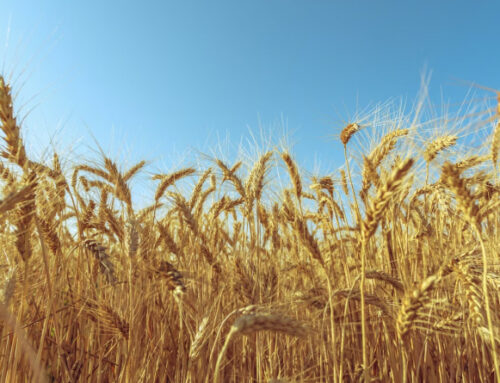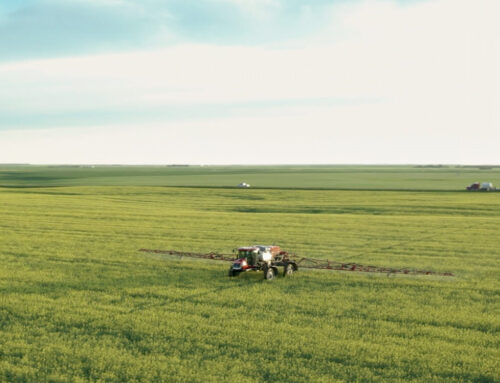The Most Common Questions That Agronomists Get Regarding Herbicide Application

Mixing
What is a general mixing order when tank mixing herbicides?
The general mixing order is represented by the acronym WALES. This stands for:
Wettable powders (dry ingredients, such as SG, WDG, DF formulations)
Agitate (to ensure dry ingredients are well mixed)
Liquid and soluble products (such as SC, SL formulations)
Emulsifiable concentrates (EC formulations)
Surfactants (including fertilizers)
This works for the majority of situations. However, there are some new formulation types on the market, so many agronomists now use the acronym WAMLEGS to take this into account:
Wettable Powders
Agitate
Microencapsulated suspensions
Liquid and soluble products
Emulsifiable concentrates
Glyphosates
Surfactants
Within each formulation type, the order does not generally matter (i.e. if you have 2 EC formulations in the mix, either may go in first)
Application timing
Does the early application make sense?
Weeds are easiest to kill when they are small. If you have some tough to kill weeds on your farm, it may make sense to spray early for the best control. Many herbicides have residual activity and will control second flushes of weeds anyways, so it makes sense to apply early with these weeds and get the full extent of that residual. Some herbicides are also safer on the crop at earlier stages than later, so again early application makes sense with these products. For crops like lentils that are not very competitive when they are small, early application may make more sense to prevent weed competition than in more competitive crops. However, if weed populations are small and light, and a big rain is forecast that will germinate more, it may make sense to hold off. Just remember that every day the weeds are out there they are competing with the crop and using nutrients and moisture. Spraying early, you can always make a second application later to control newly emerged weeds, but if you wait too long and the weeds get too large, you may not have herbicide options left that will control them.
Should I wait for more weeds to emerge, or just go now?
This is always a tough decision and depends on many factors. Product labels will list the maximum size or stage of weed that it will control. They will also list a maximum stage that is safe on the crop. If either the crop or weeds are approaching this maximum, it is best to spray now. In addition, every day those weeds are there they are competing with the crop and using water and nutrients which will affect yield. If you think there may be weeds coming, it may be wise to spray now but use a product that has some soil residual activity to control flushes of weeds that come later. If the weeds that are there now are still small and not competitive, it may make sense to delay application.
If you decide to spray now and control the weeds you have, it is always an option to come back with another application later if they do emerge- often the weeds that come later will be smaller and thinner populations and you may be able to get away with a cheaper product for this second pass that will allow the cleanest fields without much additional input cost.
Timing – what happens if I go too early or too late?
The crop and weed stages listed on the label give the range that is safe for the crop and effective on the weeds. Spraying too early or too late may result in crop injury, as the crop is not metabolizing the chemical quickly enough to avoid injury. This injury maybe just a bit of yellowing or may result in warped or empty heads which will greatly affect yield. Spraying too early on the weeds may not result in enough chemical absorbed to kill them, or too late they may be too large and grow through the application so control will be reduced or not effective at all. It is always best to stay within the timing guidelines on the label.
Application rates and water volumes
Water volume – can I cut my water volume?
Product labels will list the minimum water volumes needed to control weeds, and these should be followed. Systemic herbicides are taken in and translocated throughout the weed so good coverage may not be as important with these and often a 5 gallon/ac water volume is sufficient. Contact herbicides are different- they are not translocated throughout the plant so coverage is extremely important to kill the weeds. With these, a 10 gallon/ac water volume is often a minimum. Higher water volumes will also help if the canopy is dense or the weeds are large. Reducing water volumes risks poor weed control, and may increase the risk of crop injury if you have a lot of products in the tank at once as the droplets become concentrated.
Rates – can I cut rates? Will it work better if I raise the rate beyond label rates?
When new products are registered, they have to show PMRA that the rate they are being used at is the lowest effective rate to control the pest. Spraying at lower rates than this risks the product not working, especially if conditions are not perfect. It may also increase the risk of developing resistance on your farm.
Spraying higher than normal rates risks injury to the crop, unacceptable residues, or carryover concerns. It is best to follow label directions and apply at the rates listed there.
Does using lower than recommended label rates increase the risk of herbicide resistance?
Yes, it does. In particular, a type of resistance called “metabolic resistance” occurs when weeds still absorb the product but are able to metabolize it to a non-toxic form before it is able to kill the plant. Applying rates lower than those on the label increases the risk of metabolic resistance occurring as it increases the chances of these resistant plants surviving and passing their genes to their offspring. The PMRA requires that new herbicides show that the labeled rate is the lowest effective rate to control the labeled pests, so lower rates will not be effective on these weeds.
Weather
It looks like rain- should I spray?
Check the product label or provincial crop protection guides– rainfast periods are listed for each product that tell you how long is required between application and rainfall. These vary greatly, from 30 minutes to 6 hours. Some products are absorbed very quickly into the weeds, and some require more time to absorb. Any active ingredient still sitting on the weed when it rains will likely be washed off and may not control the weed, leading to a re-spray situation.
If it does rain shortly after spraying, monitor this field closely to see if the weeds are dying. Some products work faster than others, but it may take up to 7 days to start to see symptoms. If there are no symptoms after 7 days and the weeds are actively growing, you may need to consider a re-spray.
Bad weather- what happens if the weather turns cold just after I spray?
Most herbicides require the weeds to be actively growing in order be controlled. Stressful conditions such as cold weather after application will cause weed growth to slow and the chemical may not be as effective resulting in delayed or reduced control. The crop metabolism may slow down too, which can lead to crop injury as it cannot detoxify the herbicide fast enough. As a general rule, herbicides are most effective when temperatures are between 12 – 24oC, and activity will be reduced when temperatures are below 8oC or above 27oC though this changes with different products.
What happens if I spray when it is 30° C or 0° C?
Extreme temperatures such as these stress plants out, including weeds. They will not be actively growing during this time and will harden off or produce a waxy layer that may prevent herbicides from being taken up. Many herbicides require the weeds to be actively growing to control the weeds. As such, herbicide performance will be reduced. If these temperatures are forecast when you are looking at spraying, it may be worth delaying application for 3 days to allow the weeds to be fully actively growing again to get the best performance out of your herbicide.
Surfactants
Do I have to use a surfactant?
Yes. Surfactants are recommended for many products because they help maintain or improve performance in a wide variation of weather conditions and crop stage. If the product label recommends adding surfactant, failure to do so can results in decreased performance or crop yellowing.
Can I swap out the recommended surfactant for something I already have in the shop?
The label for some products (or provincial Crop Protection guides) specify which adjuvants may be substituted as there are often different trade names for similar adjuvants. For example, the flucarbazone page in the Saskatchewan 2020 Guide to Crop Protection states to add Agral 90®, Ag-Surf® II, Liberate®, ProSurf™, Super Spreader, or LI 700® as these are all trade names for non-ionic surfactants. However, switching into adjuvants of different types will have risks of either reduced weed control or increased crop injury. Each product is researched to find the optimal adjuvant system for its performance so these are the adjuvant classes that should be used.
Can I swap out the recommended surfactant for something I already have in the shop?
The label for some products (or provincial Crop Protection guides) specify which adjuvants may be substituted as there are often different trade names for similar adjuvants. For example, the flucarbazone page in the Saskatchewan 2020 Guide to Crop Protection states to add Agral 90®, Ag-Surf® II, Liberate®, ProSurf™, Super Spreader, or LI 700® as these are all trade names for non-ionic surfactants. However, switching into adjuvants of different types will have risks of either reduced weed control or increased crop injury. Each product is researched to find the optimal adjuvant system for its performance so these are the adjuvant classes that should be used.
Should I use a surfactant even if the directions say I don’t need to?
No- adding surfactants that are not listed in the directions is risky. The biggest risk is an injury to the crop as the surfactants may heat up the mixture. It may also lead to loss of weed efficacy as too much surfactant can cause the spray droplets to run off the leaves without being absorbed into the plant.
When new active ingredients are registered, they are tested to determine the optimum surfactant for performance, so adding additional surfactants risks decreasing the satisfaction with these products.
How much impact does water quality have on herbicide performance?
Water quality may severely impact herbicide performance, depending on the active ingredient. For example, when glyphosate is added to spray water, it breaks down to its salt form. Ions in the water such as bicarbonate can bind to these molecules which prevents them from being taken up into the weeds and control will be reduced. At very high or low pH, some herbicides will precipitate out of the solution and will not be taken up into the weeds (and risk plugging the sprayer).
Can I mix foliar with my herbicides?
Foliar micronutrients often work best when applied early in the season, so herbicide timing may be a great time to apply them (depending on the product). As these products often contain metals such as copper or zinc, they may bind to herbicide products and reduce efficacy of the herbicide if they are not compatible. This is very product-specific, so most foliar suppliers will have a compatibility chart showing which products their research has shown to be compatible with.
As foliars are not listed on approved herbicide labels, this is often done at the grower’s own risk. Water quality can have a very large impact on compatibility as well, as water hardness, metals, pH, and other factors can influence the compatibility and it is impossible to test every variable out there. As a result, we often recommend a quick jar test to confirm compatibility with your personal water source before mixing up the first spray tank: In a glass jar, mix the herbicides and foliars at the same ratios and water volumes you plan to spray with, and in the same order you will mix them. Between the addition of each product, shake the jar to simulate agitation. Once mixed, allow to sit for at least 30 minutes. After this time, check for any gelling, separated layers, or strange chunks that have come out of solution. If the mix looks good, you can likely proceed with the application. A jar test is an extra step but is a lot faster than cleaning out a sprayer tank if you have compatibility issues!








